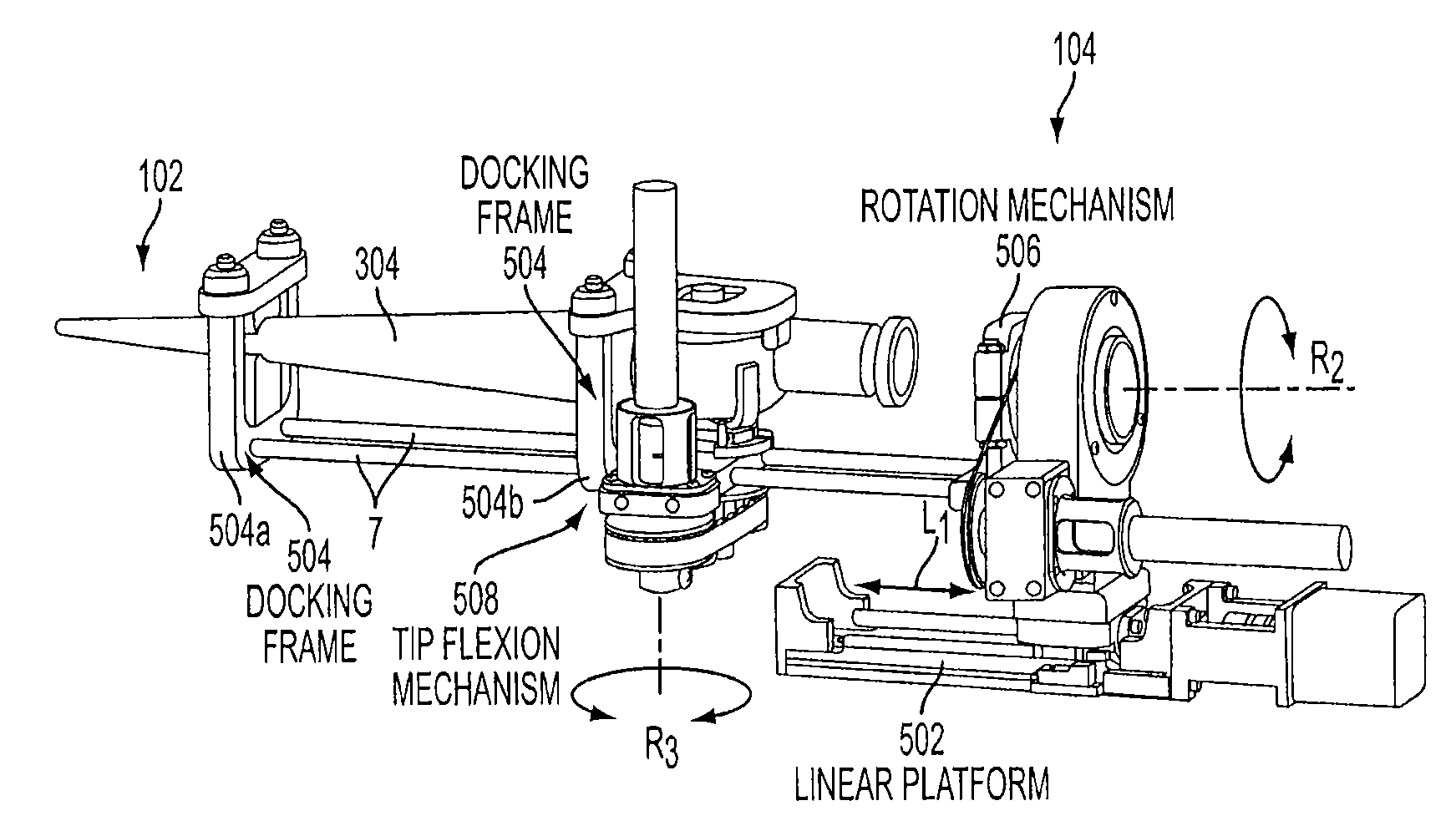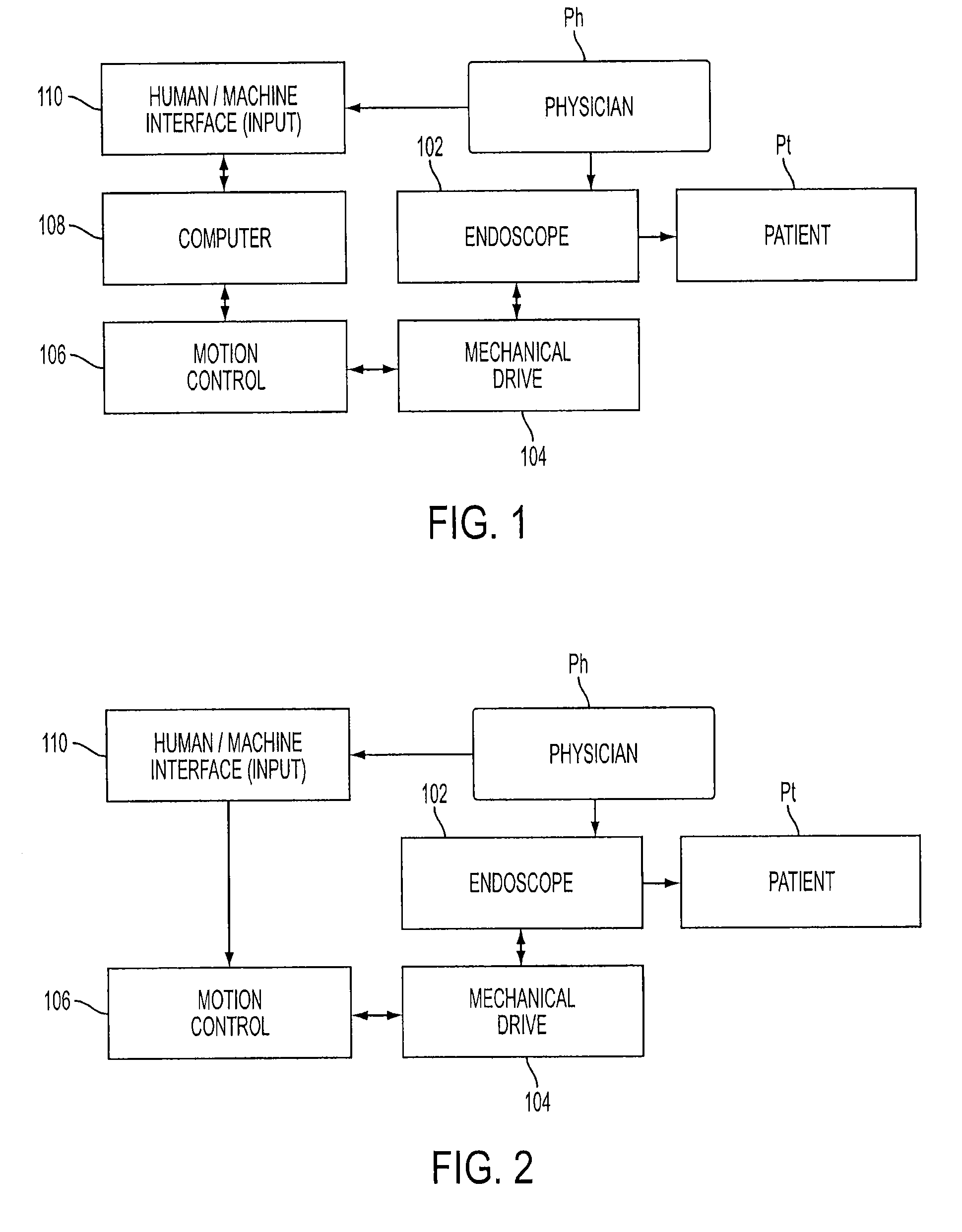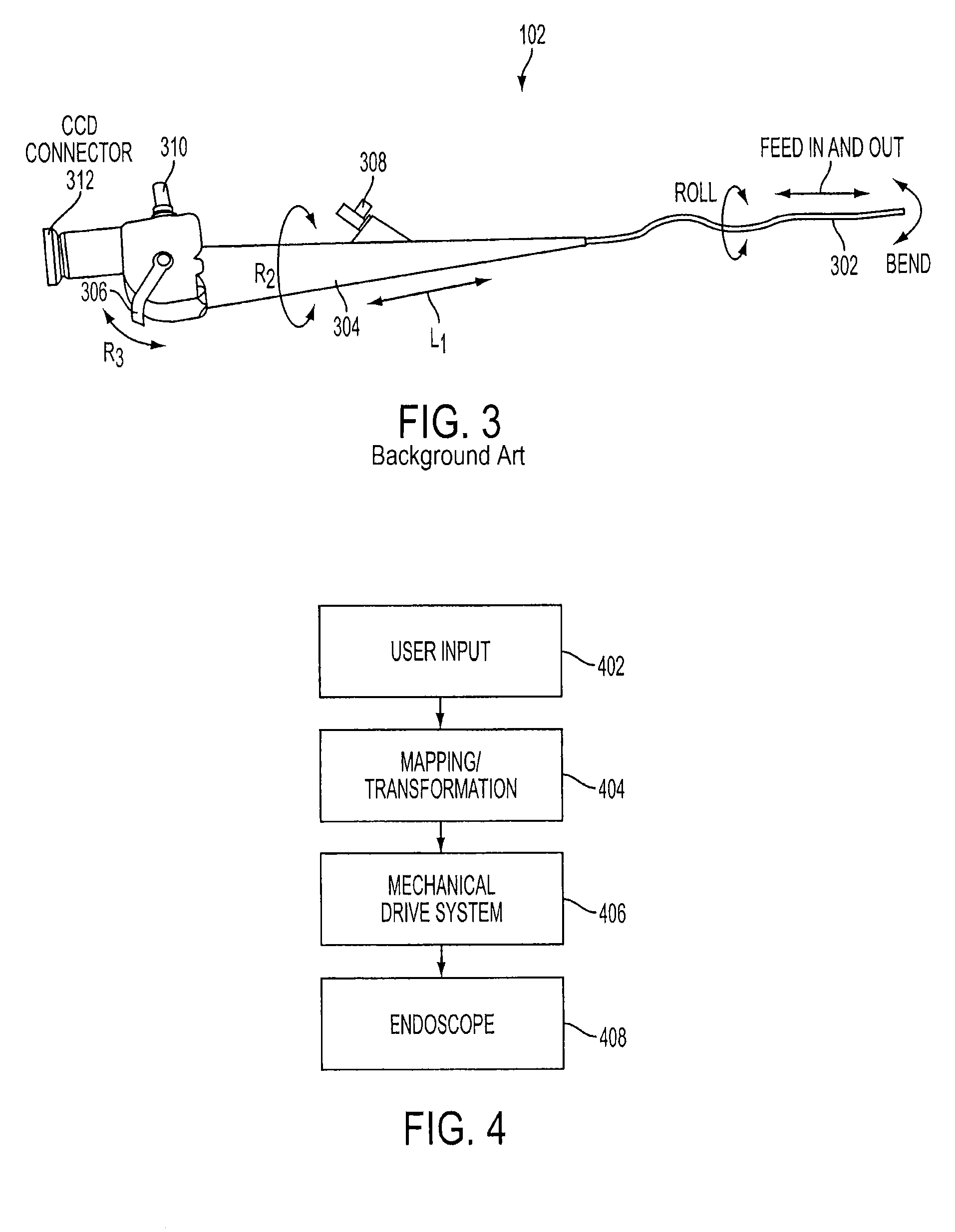Enhanced control of flexible endoscopes through human-machine interface
a flexible endoscope and human-machine interface technology, applied in the field of integrated control/movement system and human-machine interface to enhance flexible endoscopy, can solve the problems of increasing user fatigue, increasing the frequency of errors, and difficult to learn and perform intuitive control, so as to improve the safety profile, reduce the damage of instruments, and improve the accuracy of movement
- Summary
- Abstract
- Description
- Claims
- Application Information
AI Technical Summary
Benefits of technology
Problems solved by technology
Method used
Image
Examples
Embodiment Construction
[0099]A preferred embodiment and variations thereof will be set forth in detail with reference to the drawings, in which like elements refer to like elements or steps throughout,
[0100]FIG. 1 illustrates the key features of the invention. The endoscope 102 is manipulated by the physician Ph to the region of interest within the patient Pt as done in current clinical practice. In the urinary tract, that would be up to the renal pelvis. The endoscope 102 is then placed in a mechanical drive system 104 that is capable of actuating translation, rotation, and tip flexion degrees of freedom. The mechanical drive system 104 is connected to a motion control system 106, which enables precision actuation of those degrees of freedom. The motion control system 106 connects to a personal computer 108 that connects to a human / machine interface (user input device) 110. The physician Ph then controls the endoscope 102 through the human / machine interface 110. The computer 108 accepts input commands fr...
PUM
 Login to View More
Login to View More Abstract
Description
Claims
Application Information
 Login to View More
Login to View More - R&D
- Intellectual Property
- Life Sciences
- Materials
- Tech Scout
- Unparalleled Data Quality
- Higher Quality Content
- 60% Fewer Hallucinations
Browse by: Latest US Patents, China's latest patents, Technical Efficacy Thesaurus, Application Domain, Technology Topic, Popular Technical Reports.
© 2025 PatSnap. All rights reserved.Legal|Privacy policy|Modern Slavery Act Transparency Statement|Sitemap|About US| Contact US: help@patsnap.com



